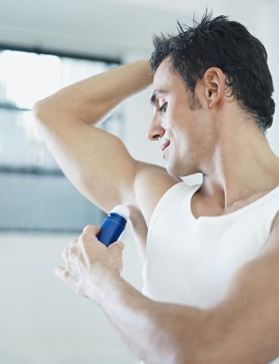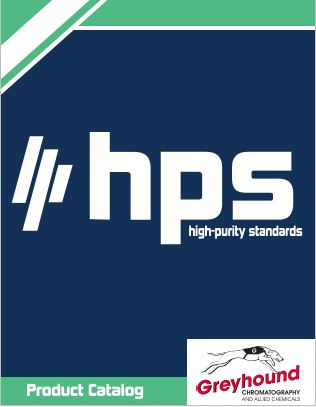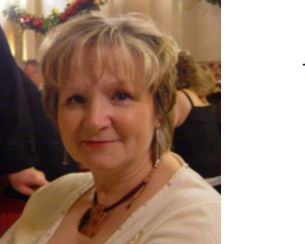What makes Antiperspirants and Deodorants Work?
Antiperspirant and deodorant are commonplace in modern society. Before heading to the lab or leaving your house, you likely apply a stick, roller or gel deodorant to keep yourself sweat-free and smelling fresh throughout the day, but this was not always the case. For millennia people would bath infrequently, with only perfumes and fragrances to prevent natural odour.
It was not until the late 1800s that commercially available, chemically-produced deodorants first came into existence. Today, many deodorants and antiperspirants work together as one unit to prevent sweat and protect against bad odours. Whether you do research with personal care products or you are just a curious consumer, here are chemistry details that make deodorant work.
Aluminum compounds
Aluminum compounds are critical to the success of antiperspirant deodorants. The ions of aluminium compounds are drawn into the epidermis. This causes cells to fill with water and swell, blocking the ducts that secrete sweat, Common compounds used as active ingredients in antiperspirant include aluminium chlorohydrate, aluminium zirconium tricholorohydrex glycine, aluminium chlorohydrate, aluminium hydroxybromid.
Some people have been critical of the use of aluminium in antiperspirants because it may be absorbed into people's systems and lead to negative health effects, such as Alzheimer's disease. But, as the American Chemical Society explained, this correlation between antiperspirants and Alzheimer's is not true.
"In the 1970s, some researchers began to fear that aluminium in antiperspirants could lead to Alzheimer's disease," the ACS explained. "Subsequent studies have convinced the American Alzheimer's Association, a patient advocacy group, and the [U.S.] Food & Drug Administration, which regulates antiperspirants, that the connection between aluminium in antiperspirants and neurodegeneration is a myth."
Other criticisms have tied aluminium in deodorant to breast cancer, but the FDA monitors active ingredient concentrations heavily.
Cyclomethicone
When deodorant was first invented, it was not in a convenient plastic stick tube. People had to use cotton swabs to wipe the solution on themselves. However, as the ACS explained, these solutions were largely made of acid or alcohol, which would dry out skin, cause irritation and eliminate odour at the cost of physical discomfort.
It was not until the 1970s that deodorant producers found a quick-drying chemical that would not irritate skin. It is called cyclomethicone and is used to this day.
Known as 2,2,4,4,6,6,8,8,10,10-decamethyl-1,3,5,7,9,2,4,6,8,10-pentaoxapentasilecane or C10H30O5Si5, cyclomethicone is an odourless, colourless silicone compound that is used in a variety of personal care products. Unlike aluminium compounds, cyclomethicone is too large to pass through the initial layer of skin, so there is no risk of absorption. In Europe, cyclomethicone is regulated for environmental concerns rather than personal health worries.
Antibacterial ingredients
Just as aluminium compounds are the antiperspirant active ingredient in deodorants, antibacterials are the active aspect of odour reduction. Antibacterial ingredients work to eliminate the bacteria that cause bad odours from areas where sweat is common. Many types of deodorants use alcohol ingredients that kill bacteria, while others use artificial chemicals such as triclosan.
Triclosan is used in a number of personal care products including toothpaste. Many people have been critical of this chemical in over-the-counter products. However, the FDA explained that it is not known to cause harm to humans and has been proven to be beneficial in some circumstances, such as fighting gingivitis.
Other ingredients
The other chemicals used in deodorants vary from brand to brand. The humectant propylene glycol is used to prevent the product from drying out, triethanolamine and diethanolamine may be used for pH control, and other colour and scent-specific chemicals may also be used.
Like any personal care products, deodorants and antiperspirants are made from a number of active and inactive ingredients that work toward a common cause and a longer shelf life.
Chem Service Certified Reference Standards are supplied by Greyhound Chromatography and Allied Chemicals, 6 Kelvin Park, Birkenhead, Merseyside, CH41 1LT Email: info@greyhoundchrom.com
CONTACT US
Tel: +44 (0) 151 649 4000
Email: marketing@greyhoundchrom.com
FOLLOW US
YOU MAY ALSO BE INTERESTED IN OUR NEWSLETTER
About the Author
Susan Massie, Sales & Marketing Director, Greyhound Chromatography and Allied Chemicals Email: sue@greyhoundchrom.com
Susan Massie is the Sales & Marketing Director for Greyhound Chromatography and Allied Chemicals, affectionately known as 'Greyhound' in our scientific community. Greyhound was founded by Susan's husband Paul Massie more than 40 years ago, Susan hasn't been in the business for all of that time but has been involved with Greyhound for over 17 years. Greyhound continues to grow, expanding into new markets and taking on the challenges of our ever changing environment. It's heartwarming to witness the world waking up to the fact that we are damaging our planet on a daily basis. Every action we take has a direct effect on our planet and the world we leave behind for future generations. Susan is passionate about climate change and is happy to work in an industry that can have a direct effect on reducing the impact of our actions on the environment. All of the team at Greyhound take our responsibilities very seriously, the products that we supply are used by the world's leading scientists and chemists as they endeavour to monitor and repair the environment. All is not lost, if we all take responsibility for our actions, from reducing our waste and reusing or recycling our material collateral we can make a difference. The internet is full of useful advice and guidance, Susan is proud to contribute to that wealth of knowledge whenever she can.
Greyhound prides itself on personal service which provides prompt, efficient, cost-effective, safe delivery of all products. Greyhound provides technical advice and distribution of Certified Reference Standards and Materials, Laboratory Consumables, Solvents and Reagents across all scientific disciplines. Greyhound Chromatography offers over 1 Million products from its UK warehouse. The team at Greyhound are proud to support the work of the world's leading scientists and chemists as they challenge the abuse of our planet and try to make a difference to the world we leave behind for our ancestors.
You can view Susan's Linked In Profile here https://www.linkedin.com/in/susan-massie-79ab4121/


















